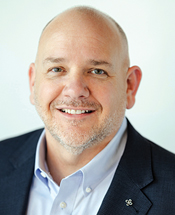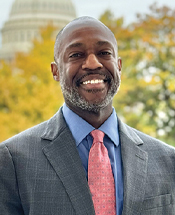
As the baby boomer generation ages into retirement, senior living providers face a workforce reckoning. With the “silver tsunami” expected to bring a wave of new customers to the sector, operators say the current supply of qualified caregivers is nowhere near sufficient to meet the coming demand—which won’t quite be the same demand providers are used to.
“Boomers want a different product,” said Lynne Katzmann, founder and CEO of Juniper Communities, which provides assisted living, independent living, and memory care in 28 communities across the United States. (Katzmann is also, as she pointed out, a boomer herself.) Compared to the silent generation, they expect more autonomy, personalized experiences, and wellness-oriented lifestyles.
 “I don’t want to see my caregivers in scrubs,” she said. “I want my life to be normalized in the way I’ve always known it. I don’t want it to be transformed into a care experience.”
“I don’t want to see my caregivers in scrubs,” she said. “I want my life to be normalized in the way I’ve always known it. I don’t want it to be transformed into a care experience.”
Chris Henderson, president and CEO of Pinnacle Living, agreed that today’s prospective residents are better informed and more selective, and they expect flexibility—not just in lifestyle options but also in pricing and services. “They’re looking for more of a healthy-lifestyle-driven product than a care-oriented product,” he said.
But as the number of potential residents rises, the pool of available workers is shrinking. “You’ve got a projection of a million gap in the need for direct care workers,” warned Marvell Adams, a former nursing home administrator and cofounder of the consultancy W Lawson. “Residents and providers, now and for the foreseeable future, need direct care staff more than direct care staff need them.”
To confront this challenge, providers and industry partners are investing in workforce development from multiple angles: building talent pipelines, rethinking recruitment, and reimagining workplace culture to boost retention.
Building New Talent Pipelines
Some of the most urgent workforce solutions are focused on expanding access to caregiver training. The Arkansas Health Care Association recently launched one of three planned nursing schools to address the nursing shortage. Located in Little Rock, the school provides certified nursing assistants (CNAs) with the training necessary to qualify for certified medication assistant positions, which, in turn, makes them eligible for licensed practical nurse training. Crucially, the training is part time, allowing students to continue working as they prepare to advance their careers.
Similarly, the Idaho Health Care Association, in partnership with the Idaho Department of Labor and Idaho Workforce Development Council, operates an apprenticeship program designed to boost the health care talent pool. Facilities can enroll their employees in training programs for a variety of roles, such as CNA, activity director, resident services director, and skilled nursing facility (SNF) administrator. Employees receive classroom education, on-the-job training and mentorship, and wage increases; employers get reimbursed for the costs.
There are also nonprofit organizations like Dwyer Workforce Development that are devoted to growing the health care workforce. The company aims to train 100,000 new CNAs by 2030, having already trained more than 9,000 across the country.
“Our goal is to change peoples’ lives,” said Barb Clapp, Dwyer Workforce Development CEO. “It’s also certainly to help with the health care staffing crisis, which is catastrophic.”
Rethinking Recruitment
As those new talent pipelines take shape, providers are finding that getting people in the door requires better messaging, faster hiring, and more personalized outreach. Denise Boudreau, a consultant who helps senior living organizations build high-performance cultures, has found that many providers miss the mark in their job listings.
“You could just replace the organization name with any other, and there’s nothing special or interesting about [the listing],” she said. Successful recruiters use it to identify the prospective employer’s “secret sauce”—what makes it different from other organizations—and market it to the right audience.
 At Pinnacle Living, Henderson overhauled the organization’s recruitment process by centralizing it at the corporate level. With 950 employees across six campuses, his team realized that supervisors were struggling to get candidates in the door because they were too busy doing the job of their employees to conduct interviews. So Pinnacle added three full-time positions—two recruiters and one supervisor—to tackle the problem head-on. This hands-on approach helped bring Pinnacle’s 130 vacancies to fewer than 20, after which the three positions were trimmed to one recruiter and one supervisor.
At Pinnacle Living, Henderson overhauled the organization’s recruitment process by centralizing it at the corporate level. With 950 employees across six campuses, his team realized that supervisors were struggling to get candidates in the door because they were too busy doing the job of their employees to conduct interviews. So Pinnacle added three full-time positions—two recruiters and one supervisor—to tackle the problem head-on. This hands-on approach helped bring Pinnacle’s 130 vacancies to fewer than 20, after which the three positions were trimmed to one recruiter and one supervisor.
“That full-time recruiter works with the department directors, does the ad placement, the ad development, the initial screening,” Henderson said. “That’s worked really well for us.”
The follow-through doesn’t stop at the interview. “The recruiter follows up before the interview to make sure the candidate knows where to go, who they’re meeting with, and what time they’re supposed to be there, and then after the interview to make sure everything went okay,” he added.
Compensation, of course, is another important piece of the puzzle. “If we don’t change and support the way we attract and retain the lowest-paid employee within our organization, then we’ve got a challenge,” Henderson said. “If we don’t pay that person a living wage, then we’ve got a challenge.”
Nearly a decade ago, Juniper Communities rose to this challenge with a program called 15 by 20, in which it committed to pay $15 an hour by 2020. This is considered a living wage in the states where Juniper operates. The program was successful, but with success came a renewed mission to meet its employees’ needs.
“Since COVID, and with recent inflation, $15 an hour is the beginning, not the end,” Katzmann said. “Continuing to increase wages, to creatively provide the kind of benefits that people need and want to make their lives easier—so they can focus on the professional part of their work—is key. And that’s different for different people at different ages and at different locations across the country.”
Keeping the Talent You Have
Recruiting talent is one challenge; keeping it is another. For many providers, the key to retention lies in creating a workplace that offers flexibility, stability, and a sense of purpose.
“There is still a lot of work to do to create the environments that are going to be supportive of the needs of individuals doing the day-to-day, hands-on care,” Marvell Adams said.
As he noted, many nursing home employees are also unpaid caregivers in their own homes. They need employers who can offer flexibility around shifts, benefits, and temporary job-sharing. “If it’s not flexible, if it’s not out of the box, odds are it’s eventually going to hit a brick wall.”
 Creativity is key. Far from any one-size-fits-all approach, Adams argued, providers need to meet their employees where they are. That might mean developing programs in which resident volunteers tutor employees’ children during a shift, an arrangement that supports working parents and fosters community. Or it might mean opening an on-campus early childhood education center with subsidized tuition for staff.
Creativity is key. Far from any one-size-fits-all approach, Adams argued, providers need to meet their employees where they are. That might mean developing programs in which resident volunteers tutor employees’ children during a shift, an arrangement that supports working parents and fosters community. Or it might mean opening an on-campus early childhood education center with subsidized tuition for staff.
“It’s that type of creativity that some providers are recognizing is how we fight for the best talent,” Adams said.
Flexibility is also front and center at Pinnacle Living. “We’ve really worked hard to balance all of those work-life challenges and opportunities,” Henderson said. “Flex scheduling, flex pay, flex benefits. We’ve done pay-in-lieu-of-benefits programs that have been really successful for us.”
Success seems to be largely a matter of treating each employee as an individual rather than holding fast to any traditional approach: where pay in lieu of benefits has been right for some candidates, others have preferred to take pay cuts in exchange for higher retirement plan contributions.
Another effective move at Pinnacle has been to transition away from anonymous employee surveys. After 18 months of trust building, the organization now uses named feedback to respond more swiftly and effectively to issues, without any fear of retaliation for the feedback provider.
“If you’re going to put something in writing, if you’re going to express a concern, we want to be able to follow up with you,” Henderson said. “Being able to react to team member concerns quickly has been a driver for us.”
Investing in the Future
For Boudreau, retention hinges on workplace culture—and culture doesn’t happen by accident. “A good culture is intentional,” she says. “The decisions you make, the policies you put into place, the interactions people have with team members, the interactions team members have with each other, all of that—be intentional about it, that it’s supporting the culture you want in the organization.”
 Equally essential is creating a pathway for employees to advance. To that end, Juniper Communities launched a two-year leadership academy for high-performing employees, helping them develop the skills they’ll need to serve the coming generations. “We need sophisticated leaders who are not just managers but also change agents,” Katzmann explained.
Equally essential is creating a pathway for employees to advance. To that end, Juniper Communities launched a two-year leadership academy for high-performing employees, helping them develop the skills they’ll need to serve the coming generations. “We need sophisticated leaders who are not just managers but also change agents,” Katzmann explained.
Adams has adopted a similar approach with W Lawson’s Longevity + Inclusion Alliance Fellows Program, which helps build a diverse and inclusive new generation of SNF leaders. “The purpose is to have peers that are doing innovative things, that are thinking forward, that are being inclusive—and not just inclusion for the sake of ‘we should be doing DEI,’ but for a real business case we have to resolve,” Adams explained. “It’s about bringing leaders together that are interested in solving some of these issues in ways that are outside of the box, but also giving them the courage and the support they need.”
What Policymakers Can Do
While providers employ a variety of tactics to build and retain their workforces, the labor shortage is a mathematical problem that requires policy solutions, as well.
Henderson, Katzmann, and Adams all pointed to the need for common-sense immigration policies to support workforce stability. “We need roads to citizenship,” Adams said. “We need clear on-ramps for work visas.”
Without immigration reform, he warned, rural providers, especially, will struggle to attract staff.
 The American Health Care Association has offered its own Better Way policy priorities, which include strengthening the long term care workforce, protecting Medicaid, reaffirming the promise of Medicare Advantage, and rationalizing the regulatory environment. The association’s workforce proposals include streamlining legal pathways to bring more international caregivers to the United States, student loan forgiveness, tax credits, child care incentives, and grants and scholarships for training programs.
The American Health Care Association has offered its own Better Way policy priorities, which include strengthening the long term care workforce, protecting Medicaid, reaffirming the promise of Medicare Advantage, and rationalizing the regulatory environment. The association’s workforce proposals include streamlining legal pathways to bring more international caregivers to the United States, student loan forgiveness, tax credits, child care incentives, and grants and scholarships for training programs.
The labor shortage may be real, but so is the senior living profession’s ability to adapt to the next generation of customers. With new training pipelines, more effective recruitment strategies, a sharper focus on workplace culture, and proactive policy solutions, the sector has the tools it needs to build a new, stronger, and stable workforce.
“The best people in our industry are here because they have a passion for the work we do,” Katzmann asserted. “They’re there because they want to be.”
Steve Manning is a journalist based in New York City.